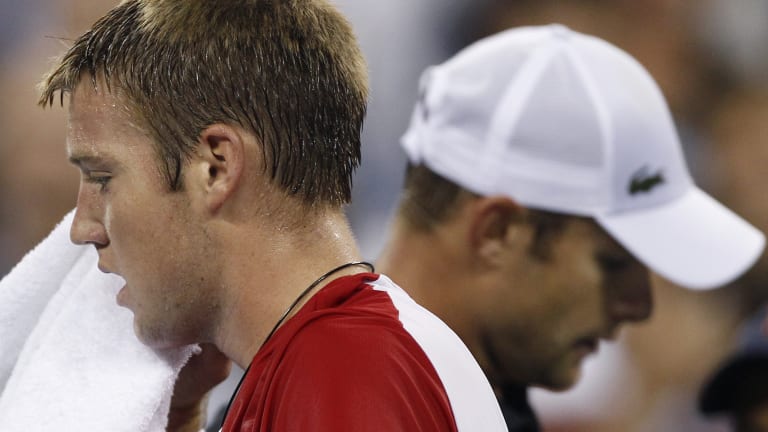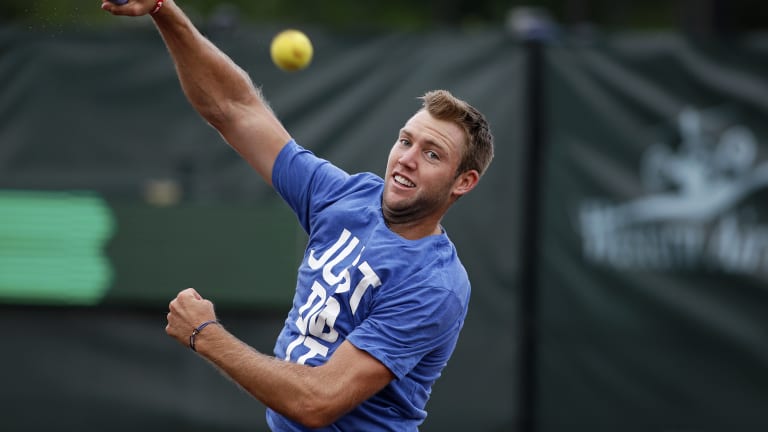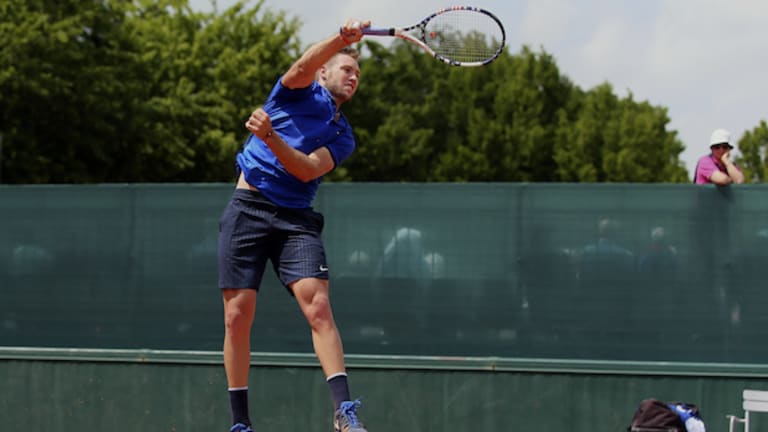The process began when, according to Babolat’s tongue-in-cheek “Jack Sock for President” ad campaign, Jack was “born in America’s bread basket, in an actual bread basket.” Sock indeed grew up in Nebraska, where he lived through the sixth grade. Part of an athletic family, Jack was exposed to golf—which his dad, Larry, plays regularly—and tennis, which his mom, Pam, played recreationally. Jack and his older brother, Eric, play both sports today, but as boys it was tennis that they pursued.
“It wasn’t pushed on me by any means, but I happened to find a tennis racquet and got into some clinics when I was younger,” Jack says. “I remember watching [Andre Agassi’s] Bollettieri instructional videos when I was a kid.”
Another tennis academy soon consumed Jack. Located about 200 miles southwest of Lincoln in Overland Park, The Mike Wolf Tennis Academy would provide Jack with the resources necessary to harness his proclivity for the sport. Week after week, Pam would drive her sons to the acclaimed tennis center. In seventh grade, Jack and his family relocated to Kansas City.
It was worth it. And though Jack didn’t realize it then, the move away from Nebraska foreshadowed his decision to eschew college and start a career in the pros.
But even as a globetrotting pro, Jack never seems to be far away from home. When he won the doubles title at Wimbledon, he brought his dad to the Champion’s Dinner. During the last two French Opens, the first thing Jack did each morning was check on the Kansas City Royals. (“It was stressful but almost less stressful because I didn’t have to sit through the game, be all nervous and anxious,” he says.) He has purchased a residence in Overland Park; in the basement is a photo mural of Jack serving, with Eric and his dad clearly visible in the stands.
Jack was home more than he would have liked in early 2015. Pelvic surgery sidelined him until March, but worse, Eric had contracted Lemierre’s syndrome, a rare bacterial disease. Bedridden in a hospital for three weeks, Eric was fighting for his life.
To everyone’s great relief, Eric recovered. This year, Jack’s visits home are once again trips he relishes. Two weeks before Wimbledon, while many pros were in Europe hitting on grass, Jack remained in Kansas City. When the topic of baseball was broached, Jack interjected: “Actually, a couple of my friends and I are headed to the Royals game right now.”
*


